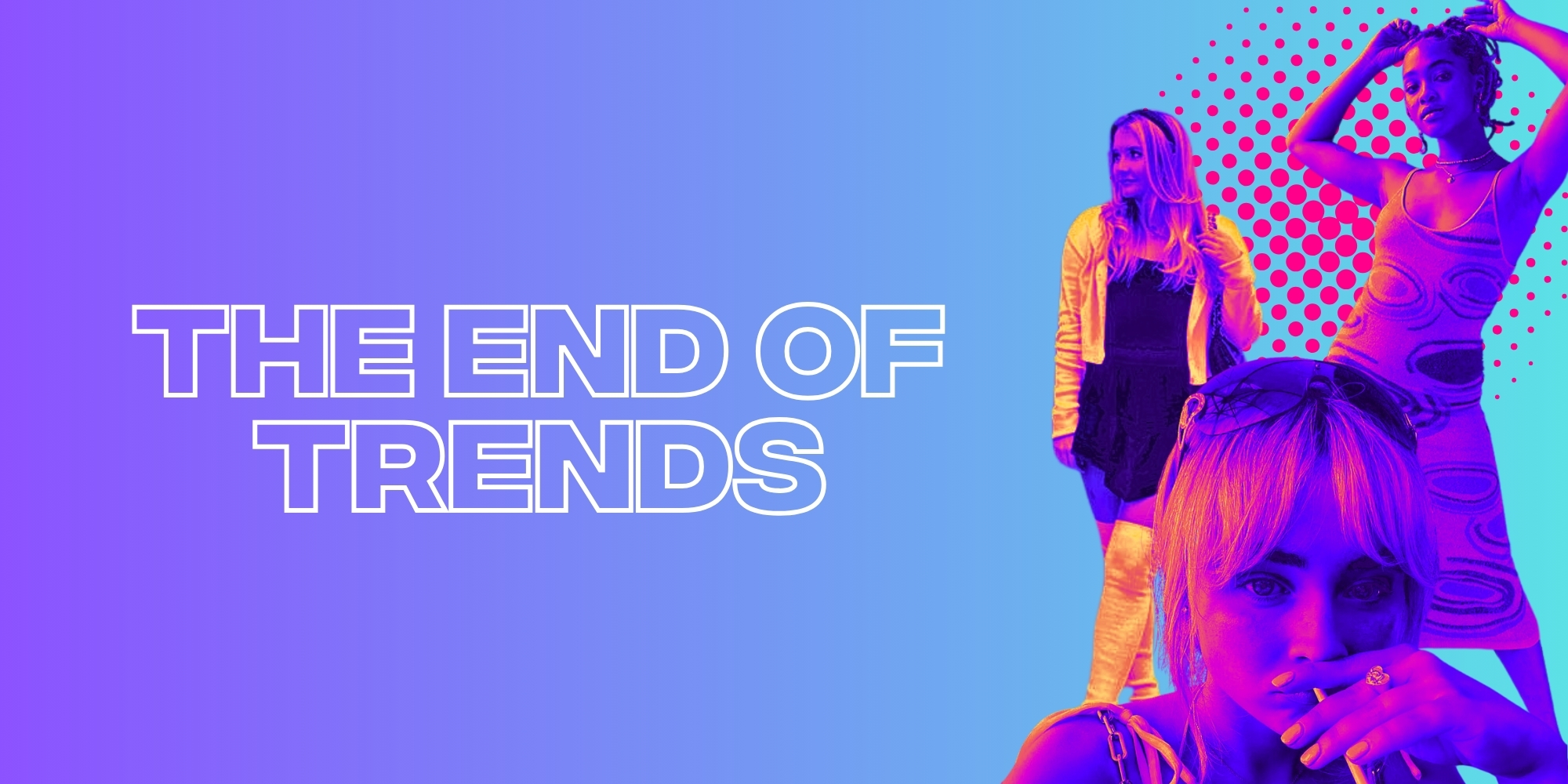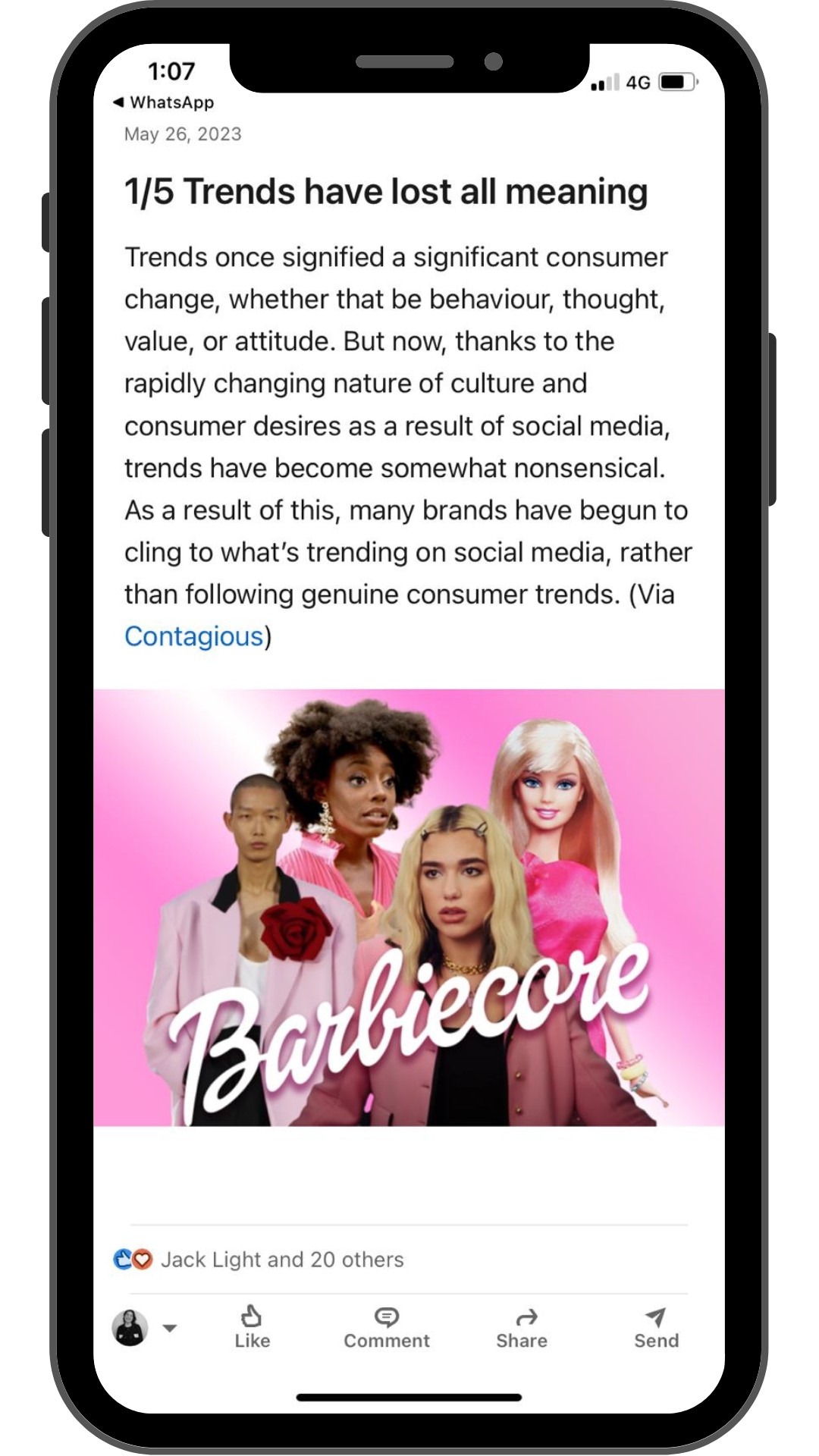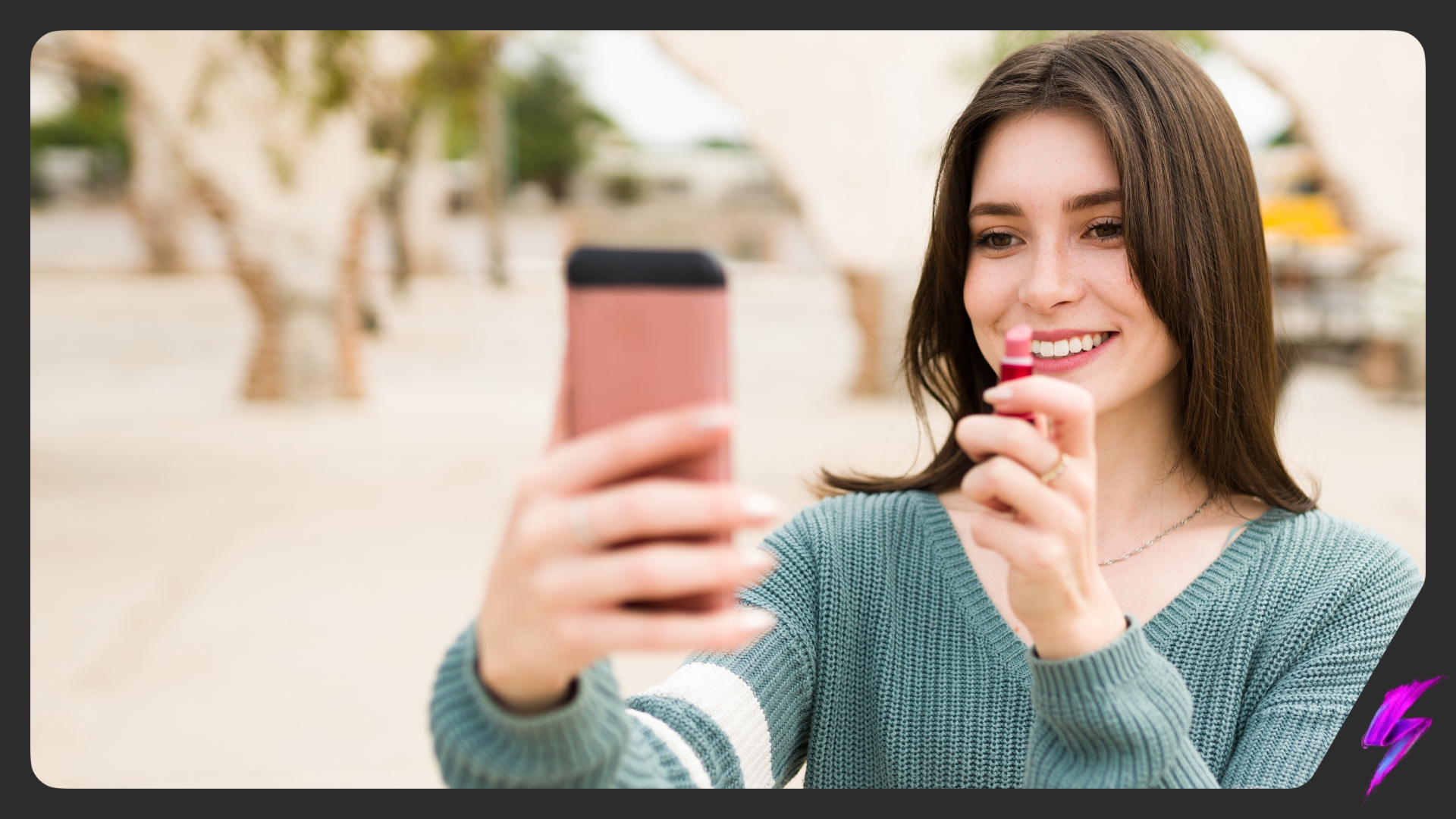The Only Thing Trending Are Trends: How To Identify Meaningful Trends
Apr 12, 2024
Industry Trends

Trends.
For marketers, the word is used so often it often shows up in our dreams.
It is hailed as the key to solving any issue that arises. Not enough engagement? Stay on trend. Blog posts need more readers? Write about trends. A brand wants to connect with the Gen-Z audience? Start posting more trends.
Yet, the word is used so frequently, it has started to lose any meaning. Trends used to describe meaningful social change. Nowadays, the term simply refers to any popular topic on social media.
This obsession with trends has led to them becoming nearly useless. If everything is trending, then ultimately nothing is.
How did we get here and where are trends headed? Moreover, how do you find meaningful trends?
Read on to find out.
MEANINGFUL TRENDS: THE BACKSTORY
Once upon a time, marketers and brands used the term ‘trends’ to refer to notable changes in society.
Trends meant “an emerging and defining collective thought, behaviour, value, or attitude. A shift in society”.
For example, the shift in consumer mindset over the past few years away from exclusivity and towards authenticity. These meaningful trends were of note, as they required brands and marketers alike to change their approach and adopt a new way of working.
Yet, these days, a trend is more likely to mean the latest niche aesthetic consumers are obsessed with. Things like mermaid-core and rat girl summer. The TikTok-ification of our society has greatly exasperated our need to label anything and everything. Every tiny fad must have a cutesy, marketable name; think glazed donut hair and blueberry milk nails.
@c.a.i.t.l.y.n on #blueberrymilknails and how identity is shaped by capitalism. to clarify some points: i actually disagree w jia tolentino’s point that people are “too busy” with self actualization – under capitalism, self actualization is reserved largely for those who can afford it, and instead we have to buy cheap substitutes. and why are people *mad* abt blueberry milk nails? probably bc they recognize it as a dumb marketing trick and are placing annoyance with all dumb marketing tricks onto this one. #socialism #feminism #marxism #politics #theorytok #philosophy #corecore
Consumers, marketers and brands alike are all left, therefore, scrambling endlessly to not only stay on trend, but find meaningful trends. Which is, all in all, a fruitless task. Trends move far too quickly and abruptly for anyone to stay on top of them. In fact, the number of trend reports published has tripled since 2016.
Much of what brands and consumers label as trends these days are not actually meaningful trends, but merely fads. The idea of trends is trending, rather than the trends themselves.
Studies have shown that a large proportion of consumers are confused by the current language of trends. In a study of 1,500 consumers globally, 43% of those surveyed had never even heard of the supposed hottest trends of the moment; trends such as Cottagecore, Barbiecore, Indie Sleaze and Permacrisis. 57% of people had heard of at least one of these terms, and less than half of the surveyed had tried to participate.
Evidently, our obsession with trends has gotten wholly out of hand. If consumers themselves are confused by trends, how can brands successfully engage with meaningful trends to connect with their audiences?
Moreover, how did we get here?
MEANINGFUL TRENDS: TRENDS ARE TRENDING
Brands and the never ending trend chase
When brands joined in on social media, everything changed. It created a chain reaction which led to consumers eventually devaluing the practice of both trend forecasting and the traditional meaning of “trend”.
@oldloserinbrooklyn #stitch with @laini ozark everything is back all at once #fashiontrends #trendcycle #fashion
Brands stepped into the role of trend setters, as they became obsessed with the notion of winning at popular culture. They developed the theory that if they joined in on the conversations being had on social media, then they are “winning” at popular culture and therefore winning sales.
Which is true to a certain extent. Brands like Duolingo, for example, have revolutionised the way that companies interact with their audiences on social media. Duolingo completely re-branded itself, creating an online persona that not only joins in on trends, but starts them in the first place. This has led to the app garnering immense popularity, especially amongst younger consumers.
Many brands have taken to gearing their entire accounts and efforts towards chasing that all elusive next hottest trend. Brands believed that if they copied what consumers were doing on social media, that they would then build trust in their audiences and build cultural resonance.
Yet, in doing this, in beginning this endless chase to be cool, brands have lost what it actually means to analyse meaningful trends and how to tease out useful information from them. You have brands who have completely lost their brand voice, instead becoming nothing more than an echo chamber for TikTok trends.
Staying on trend and connected with your younger consumer base is essential in marketing in 2024. But there is a correct way to go about it; a way that is authentic to your brand’s identity.
If everything is trending, then nothing is
With the sheer number of trends operating at the same time, the idea of a cultural mainstream is flailing.
At present, everything operates on a largely even playing field. We have veered away from the ideas of culture and subcultures of years past. Whereas society used to be made up of sub-cultures and micro-aesthetics that all existed in opposition to both each other and the mainstream, nowadays, everything is fairly even.
These fads that are called micro-aesthetics and aesthetic communities on social media do not have distinct values that oppose the mainstream. More often than not, they are built around a singular product rather than an idea or belief.
Nor are these smaller communities all that small. Even trends like rat girl summer – which was born in opposition to another trend, clean girl – were far too popular to be defined as anything but mainstream too.
MEANINGFUL TRENDS: WHAT’S THE ISSUE?
@neilpatel It might seem like everything is being “TikTokified,” but this is nothing new in the world of digital marketing. Just like ChatGPT, Amazon, Threads, or any trending “new thing,” people will mimic what is new and popular. #TikTok #digitalmarketing #digitalmarketingtrends #contentcreation #marketingstrategy
So, why is this an issue? Why is the lack of meaningful trends a problem worth thinking about?
In a nutshell, it damages the relationship between brand and consumer. Our obsession with trends causes consumer exhaustion, is a futile chase, and creates empty popular culture.
Consumer exhaustion
One of the primary concerns in our era of ultra trends, is consumer exhaustion.
Approximately 64% of people believe that the pace of culture is accelerating. Fashion in particular has noticed this, with major publications left and right making note of the fact that the 20 year trend cycle has all but disappeared.
Our current era has far surpassed the traditional way of meaningful trends and mainstream culture. We now have micro-trends, niche-trends, and even meta-trends as spurred on by the birth of anti-trends.
It is exhausting as a consumer to try and keep up with the sheer number of trends out there. If every video you see on your For You Page is touting another so-called trend, then ascertaining which are meaningful trends and which are mere fads, feels like an impossible task.
What’s more, these trends disappear as quickly as they arise. For consumers, it is incredibly tiring and disheratening to continuously feel out of trend and lost. This is also damaging for brands, who wish to build a long lasting, concrete impression and image.

Futile chase
In recent years, consumers have been persistent in their demand for authentic, human-led, consumer facing brands. Across a wide array of demographics, audiences want to engage with brands that feel like they are run by real people; people who listen to and value their consumers.
The endless pursuit of cheap trends and quickly fading fads is in direct opposition to this. Up to 66% of consumers believe that brands are trying way too hard to join in on popular culture. People want authenticity, so the mere action of brands attempting to jump in on any and all trends is often a big turn off for many consumers.
Some consumers even go as far as believing that brands can dilute or cheapen trends. 70% of consumers would rather brands “serve their needs by understanding what they care about”, in comparison to the 30% of people who prefer brands to “appear relevant by leaning into the latest trends”.
This is why it is so necessary for brands to find the right, meaningful trends to engage with, and how to do so strategically. Brands must centre themselves, not trends, if they wish to successfully join in on popular culture whilst still remaining authentic.
MEANINGFUL TRENDS: HOW TO HACK IT
Where does this leave brands? Is there a way to successfully engage with and identify meaningful trends, without contributing to the increasingly overwhelming number of fads, and still remain authentic to your brand voice?
Of course!
Staying up to date with popular culture and the conversations that your target audience is having on social media is essential in our digital age. To ensure you are engaging with meaningful trends in the right manner, simply follow these three rules.
Think force
When attempting to engage with a trend, be sure to critically evaluate the weight that it has.
Is it a passing fad? Or, is it a trend with deep cultural resonance that will serve your brand in the years to come?
By considering the weight and sustainability of a trend, you are ensuring that your brand’s image stays intact. On top of this, you are not contributing to the overwhelming number of meaningless trends floating around the internet. Instead, you are staying true to your brand voice and communicating authenticity to your audience by engaging in meaningful trends.
Think human
Next, be sure to only select trends that have real meaning for the real people who will see it.
As with anything, ensuring that you are creating content that your target audience will appreciate is essential. Joining in on trends that do not pertain to your target audience will not only drive them away, but will cheapen your brand image as a whole.
Think of trends not as a way to go viral, but as a way to speak directly with your consumers and show them you are listening.
@duolingo
Think ROI
Finally, it is imperative that you consider ROI when selecting which trends to participate in.
Be sure to select meaningful trends that are an appropriate use of your time, resources and energy. Simply pumping out as many trends as possible is not only a misuse of your brand’s time, but of your audience’s too.
Engaging with trends that you are certain will be successful ensures that you will achieve a high ROI and stay connected with your audience.
FINAL THOUGHTS
Ultimately, trends are an incredibly hot topic in the world of marketing and they aren’t going away anytime soon.
Ensuring that your brand is on trend, yet authentic and genuine, is the key to successful digital marketing in 2024. Do not get swept up in the endless chase for virality. Instead, centre your brand image and your audience in everything you do. Consider your consumers, and create content for them, not the TikTok algorithm.
This will place your brand safely above the trend whirlpool; not sucked into it with the rest of the competition.
Our influencer marketing agency and social agency are located worldwide, with our agency network based in the USA, UK, UAE and China.
If you want to find industry insights, visit our influencer marketing and social media blogs.
@ Socially Powerful
Social And Influencer Marketing News + Insights
Get in touch
We'll show you how to start powerful conversation, drive social engagement, build your brand, hit sales targets or meet other goals you have, wherever you are in the world.
Work with us





